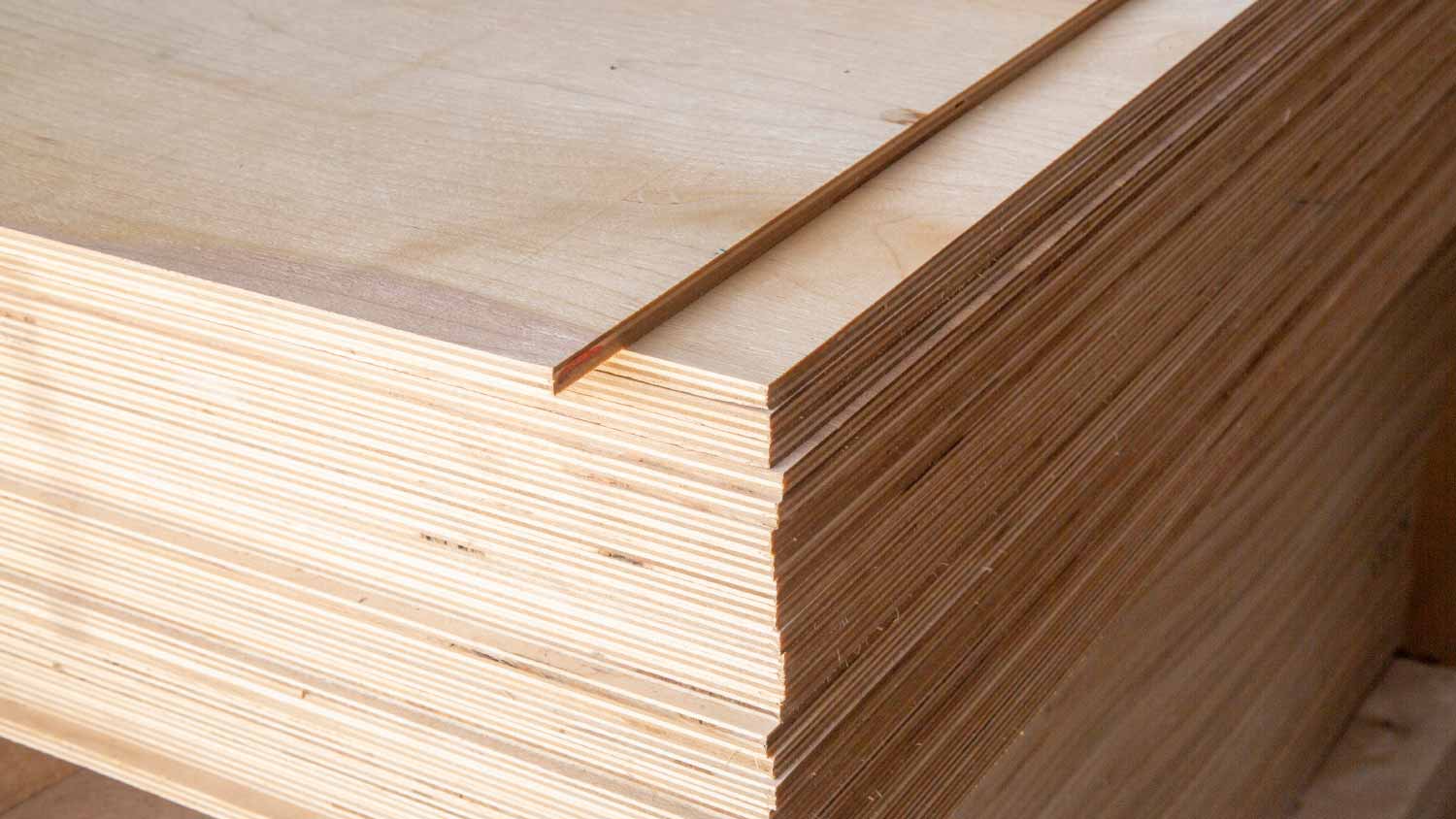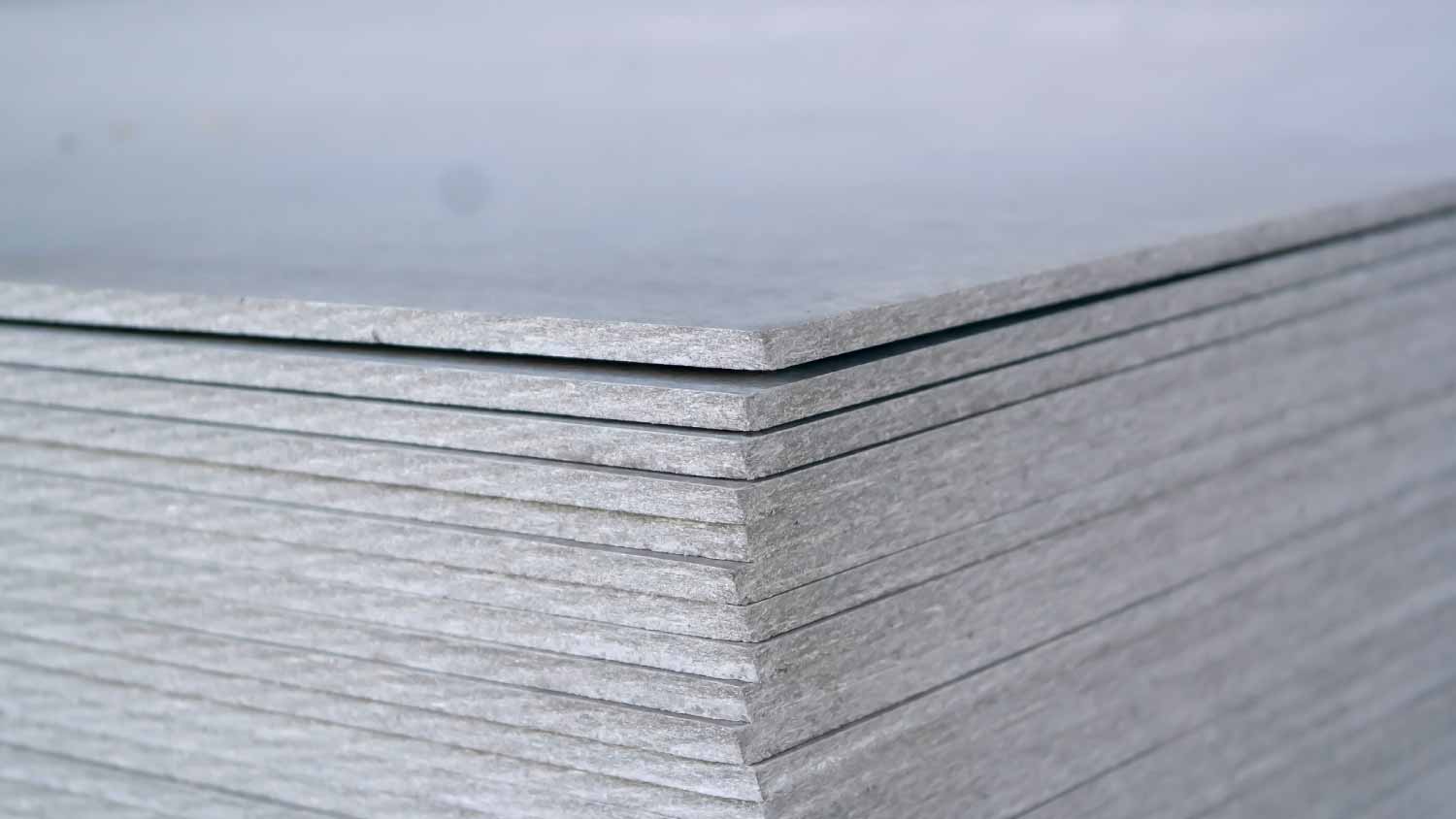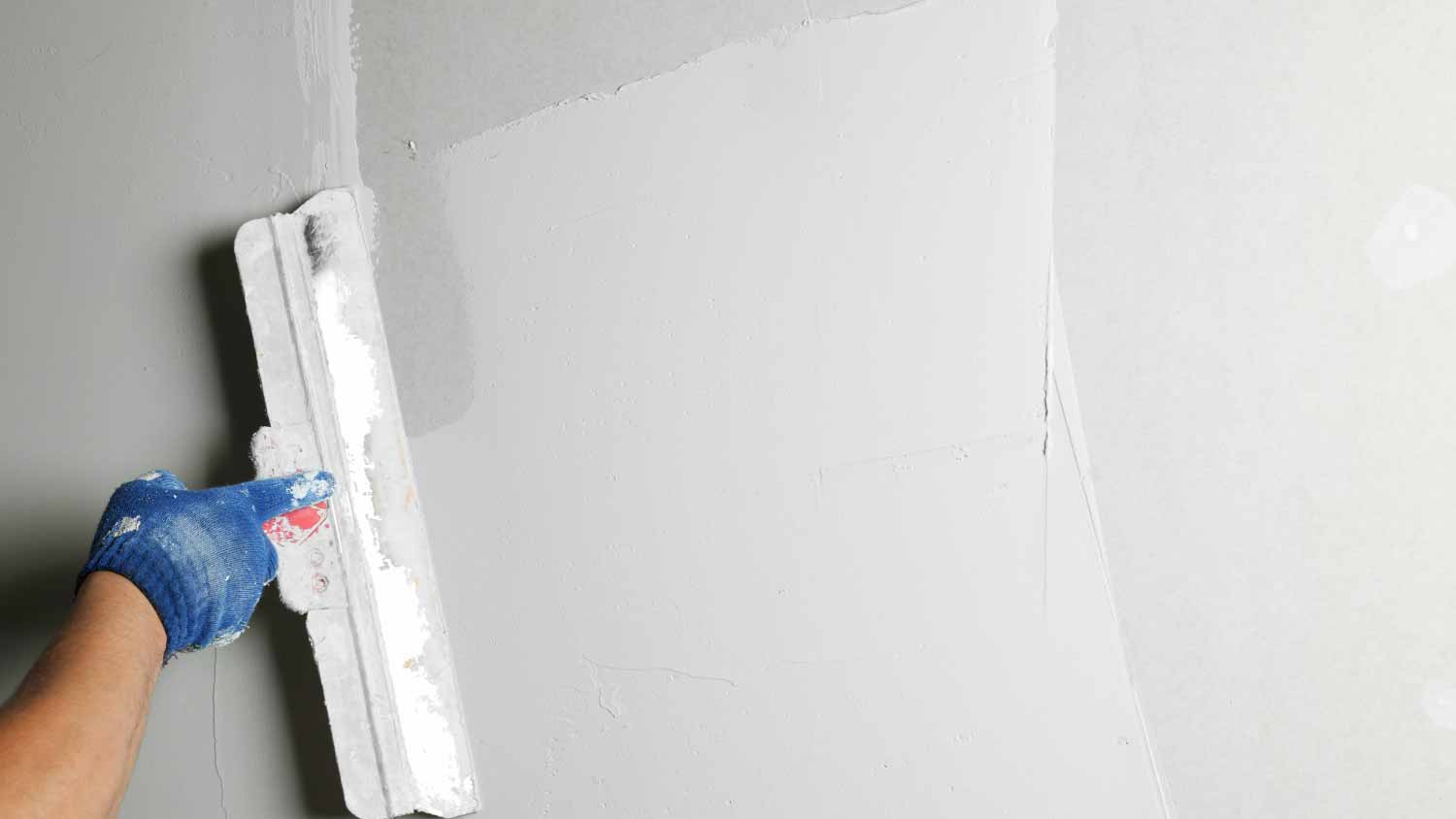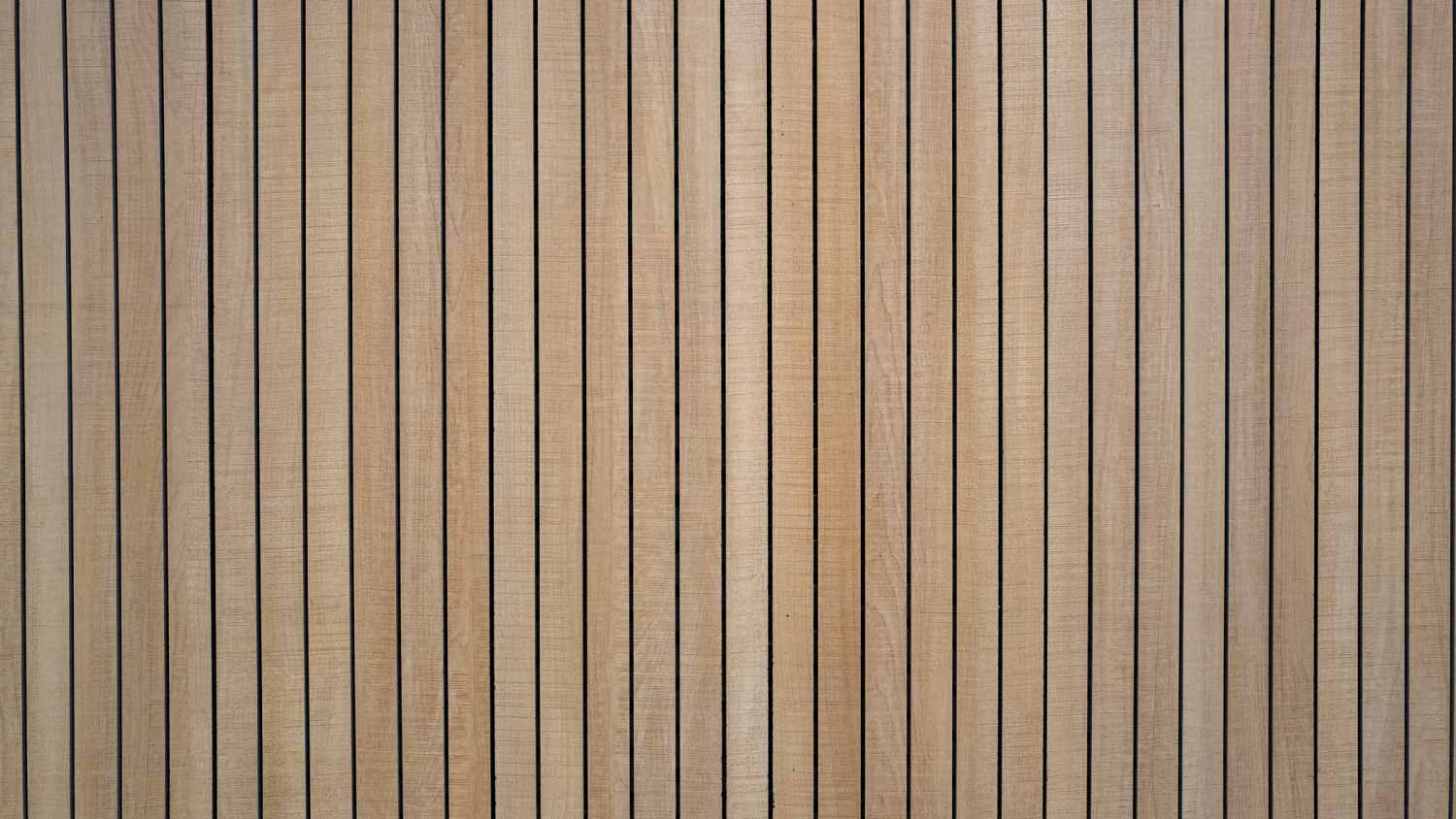11 Drywall Alternatives for Your Basement
Wood panels and faux brick are two popular drywall alternatives


Drywall and home construction seemingly go hand-in-hand, but you might be surprised to learn that this popular material isn’t always the best choice for your basement. That’s because regular drywall absorbs moisture in humid environments like basements, which can lead to mold growth. Avoid this problem by considering one of the following alternatives to drywall in your basement.
1. Plywood Sheet

As a type of engineered wood, plywood may not have the rustic charm of natural wood, but it creates a warmer aesthetic than drywall. It’s also more durable. Plus, plywood is one of the more affordable wall paneling options, with an average cost between $1 and $5 per square foot. Just be aware, though, that plywood isn’t as fire-resistant as drywall.
| Pros | Cons |
|---|---|
| Affordable | Less fire-resistant |
| Durable | Challenging install |
| Resistance to moisture and humidity | Texture isn’t for every style |
Best For:
Basements on a budget
Homeowners who like the look of shiplap or wood paneling
2. Brick Veneer
If you have brick basement walls but don’t like how they look, consider covering them up with brick veneer. Like dental veneers, this type of veneer fits on top of your existing bricks, so you can customize the color and style of the brick to your liking. Thin brick veneer, which is commonly used on indoor walls, costs around $5 to $15 per square foot.
| Pros | Cons |
|---|---|
| Rustic look | More expensive than drywall |
| Lighter than bricks | Limited design choices |
| Costs less than real bricks | Needs sealant for moist, humid rooms |
Best For:
Homeowners who want an industrial look
Dryer climates and basements
3. Exposed Brick or Concrete

Alternatively, you can simply seal up your exposed basement walls rather than cover them. You probably won’t win any interior design awards if you go this route, but it will help waterproof your basement and make it harder for mold to grow. Plus, brick and concrete are fire-resistant, so in that regard, it’s safer than drywall and most alternatives to drywall in the basement.
| Pros | Cons |
|---|---|
| Affordable | Limited design options |
| Fire resistant | Requires sealant |
| Paintable | Cold, industrial look |
Best For:
Basements with existing brick or cement walls
Homeowners on a budget
Houses with an industrial feel
4. Faux Brick
Maybe you like the look of brick but don’t want to pay for the real thing. In that case, think about installing a faux brick wall in your basement. Like brick veneer, this type of paneling comes in countless colors and designs. But instead of genuine brick, it’s made from materials like foam or polyurethane.
| Pros | Cons |
|---|---|
| Affordable | Not as strong |
| Color and design options | Requires existing wall |
Best For:
Homeowners who want brick on a budget
Basements with some walls of existing brick
5. Cement Board

Cement board is a solid alternative to drywall if you have concerns about humidity or flooding in your basement. Cement board is stronger, denser, and far better at withstanding moisture than drywall, which makes it excellent for repelling mold. On the downside, however, it’s more expensive and harder to install.
| Pros | Cons |
|---|---|
| Strong and dense | More expensive |
| Moisture-repellent | Heavy, bulky installation |
| Cleaner installation | Stark, industrial look |
Best For:
High-moisture basements
Homeowners who want an industrial look
6. Lath and Plaster
Drywall has been a staple in home construction since the mid-20th century, but before then, lath and plaster was a popular option. While the former is less expensive and easier to install and, therefore, much more common these days, there are some benefits to using lath and plaster as well. For one, it’s more durable and better at soundproofing, but it also looks more high-end than drywall.
| Pros | Cons |
|---|---|
| Durable | More expensive |
| Soundproof | Labor-intensive install |
| High-end appearance | Repairs require expert labor |
Best For:
High-end basements
Homes with a traditional feel
7. Veneer Plaster

Veneer plaster is another plaster-based alternative to drywall. To use it, you’ll spread the plaster on top of a substrate, which could be existing drywall, blueboard, or plywood, to name a few. After it dries, veneer plaster is harder and more mold-resistant than drywall on its own.
| Pros | Cons |
|---|---|
| Mold-resistant | Expensive |
| Durable | Hard to repair |
| Easy to paint | Lengthy installation |
Best For:
Homes who want the look of plaster without the price
High-moisture basements
8. Curtains or Fabric
If you’re on a budget or don’t want to kick off a time-consuming renovation project, one of the easiest basement finishing tips is to use textiles to make your underground area a little bit cozier. For example, you can hang full-length curtains from the basement ceiling or glue panels or tapestries to the walls. However, since fabrics are susceptible to mold growth, you should only try this drywall alternative if your basement is well-ventilated or free from moisture issues.
| Pros | Cons |
|---|---|
| Affordable | Not mold or moisture-resistant |
| Sound reducing | Not fire resistant |
| Many options and finishes | Not as durable |
Best For:
Dry basements
Homeowners on a budget
9. Pegboard
Pegboard is a type of wood with pre-drilled holes to hang hooks, shelves, tools, or other items. It’s an easy and cost-effective alternative to drywall in your basement because you can screw it directly into the wall studs. You can even paint it to personalize the look and add some extra color to your dark basement.
| Pros | Cons |
|---|---|
| Affordable | Not mold or moisture resistant |
| Highly personalizable | Not fire-resistant |
| Paintable | Limited insulation |
Best For:
Homeowners who need storage
Basements on a budget
10. Wood Panel

Available in all kinds of shapes, colors, and finishes, natural or engineered wood panels can make a great addition to your basement. You can also experiment with different designs, like shiplap and beadboard, to add a trendy edge to your space. Keep in mind, though, that if your basement is particularly stuffy or humid, the wood will be more susceptible to rotting or warping, so paneling might not be the best option.
| Pros | Cons |
|---|---|
| Affordable | Not mold or moisture resistant |
| Different styles | Not fire resistant |
| Many options/finishes | Less luxurious appearance |
Best For:
Dry basements
Homeowners who like the look of paneling
11. PVC Panel System
Some companies manufacture basement wall panel systems that are specifically designed as a moisture-proof drywall alternative. Specifics vary by product, but as an example, Trusscore’s Wall&CeilingBoard includes prefinished polyvinyl chloride panels you can snap together. You can also hire a local basement finishing company rather than doing it yourself.
| Pros | Cons |
|---|---|
| Inexpensive | Not heat-resistant |
| Durable and water-resistant | Requires special paint |
Best For:
High moisture basements
Homeowners who want textured or designed walls





- 12 Alternatives to Drywall for Your Renovation
- Plaster vs. Drywall: Pros, Cons, and Costs
- Drywall vs. Plaster: How to Tell Which Walls Are in Your Home
- 5 Types of Drywall and the Use Cases for Each One
- Can You Drywall Over Plaster? And Should You?
- What Is Drywall Made Of?
- Everything You Need to Know About Drywall Thickness and Size Options
- How to Dispose of Drywall When You’re Done With a DIY
- How to Repair Water-Damaged Drywall
- When Should You Hire a Pro for Drywall Repair vs. DIY?















